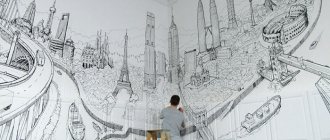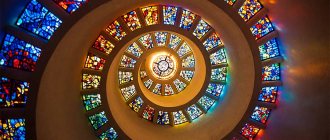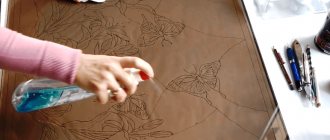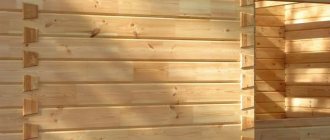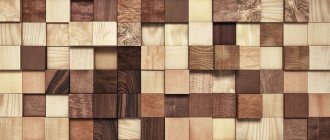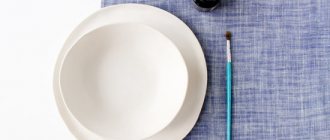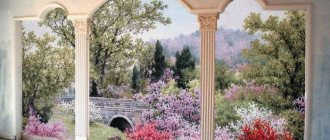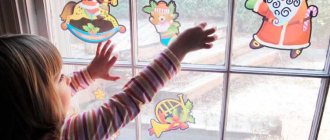Stained glass painting
Stained glass is an impressive sight, but, unfortunately, it is extremely rare in interiors today. The reason for this is its high cost and specific decor. True stained glass will not decorate every setting. The element that came to us from palace and church designs managed to maintain its fidelity to classicism. In order to prevent the unique design solution from becoming a complete rarity, the designers took up paints and imitated the technology, developing stained glass painting.
Stained glass painting
Nowadays, stained glass is often called not a canvas assembled from a multi-colored glass mosaic, but ordinary window glass painted with stained glass paints. The latter is much cheaper to produce, although visually it is practically indistinguishable from real stained glass. It is used in the design of premises in the Mediterranean, Art Nouveau, and Provence styles.
Visually, the painting is almost no different from real stained glass
Multilayer technique
The essence of this painting technique is clear from its name: paint is applied in several layers. Moreover, depending on what effect the artist wants to achieve, the bottom layer (or several layers) can be either completely dry or of varying degrees of dampness, so that they are mixed with the layer applied above.
This technique allows you to create the most realistic images using stained glass paints; with its help you can even convey shadows and the play of light. This technique requires a lot of attention and patience.
Water-based stained glass paints are best suited for this technique. Although, if you practice enough, you can achieve good results with varnish stained glass paints.
A short review of brands and manufacturers of organic-based stained glass paints (varnish) will help you make the right choice when purchasing.
Here, look at the example of the work of one master of stained glass painting, where you can clearly see the transitions of light and shadow on the boy’s face and on the bodies of the angels.
Examples of stained glass multilayer technique
Consistency in work and accuracy are important here... If errors appear, it will be difficult to correct them. And I repeat again - try, experiment! After all, nothing is impossible - anyone can master such a subtle technique... the main thing here is desire!
Stencil design on glass
This technique will greatly help those who are not able to draw beautifully. Stencils for painting on glass will help you decorate the surface evenly and neatly. Interesting stamped designs are offered in stores specializing in goods for creativity and decoration. It’s quite possible to make simple preparations yourself. Picture ideas for glass painting can be searched on the Internet.
Stencil for painting on glass
Stencils are:
- disposable;
- reusable.
The former are made of paper or cardboard, the latter are made of self-adhesive polymer film. We'll look at how to use stencils for painting on glass below.
Tips for choosing stained glass paints and making them yourself
Stained glass paints
Related article: Girlish grapes on the balcony: growing technology (photo)
Before you paint with stained glass paints, you need to choose them correctly. Today, there are 2 types of paints available in stores: without firing and with firing. The latter option requires heat treatment after application. An oven with a temperature range from 100 to 150 degrees is suitable for this.
Arbitrary drawings on glass
“The pattern on glass can be applied for a long time or for a short period”
Do-it-yourself glass painting is a great opportunity to make your interior unique. You can paint the glass surface in any way you like, the main thing is that the picture and color scheme correspond to the general interior mood of the room.
A pattern on glass will make the interior unique
The pattern on glass can be applied for a long time or for a short period. In the latter case, they paint with easily washable paints and do not resort to protective fixation of the image. This is often done on the eve of any celebrations. For example, it is customary to paint windows and door glass on the eve of the New Year holidays. Beautiful pictures chosen for glass painting will help create the appropriate atmosphere in the room.
Temporary New Year's glass painting
Painting dishes
Hand-painted dishes are a pearl in the kitchen, a source of special pride. Once you try painting on dishes, you can acquire a favorite hobby for the rest of your life. Two types of paints are used for painting: stained glass and acrylic.
Both types are used on glass and ceramics; then you can use the finished dishes as usual.
Some tips for beginners:
- It is better to start creativity using transparent glassware or snow-white ceramics. Then nothing will distract attention from the drawing.
- First you need to “draw your hand” on a sheet of paper. Practice the hardness of your strokes, drawing out thin and thick lines, and a smooth transition from thick to thin lines. It's great if you learn the spindle stroke - this is the main way to paint flowers.
- The next step is to learn how to draw flowers. The main thing is to combine shades, to prevent one stroke from merging with others. Try making a transition from a dark shade to a light one.
- To add transparency to your drawing, wet your brush with water.
- Create a sketch of the future design, cut it out and apply it to the dishes. Professional tableware painters are so confident in their skills that they don’t use sketches, they paint straight away.
- Create a sketch of the future design, cut it out and apply it to the dishes. Professional tableware painters are so confident in their skills that they don’t use sketches, they paint straight away.
- Paint the picture with paints; it is better to use a horizontal plane for drying.
- An acrylic picture will dry in a day, a stained glass picture will be dry in six hours. Dishes painted with stained glass paints must be fired in the oven for 40 minutes.
Painting plates
Gzhel
Gzhel is the name given to Russian folk art; it is recognizable in all countries of the world. This type of hand painting consists of simple lines, drops, nets, and blue flowers on a white canvas.
If you like the combination of snow-white and blue, then you can create a whole panel of plates with Gzhel painting in blue tones.
Work process:
- A ready-made pattern or drawing is taken. The round shape of the plate encourages you to create a sketch that fits organically into the circle.
- A sketch is made on the plate with a marker.
- The main drawing is drawn using a brush with a thin tip.
- White paint paints accents on the blue drawing and makes transitions.
- Before you start painting the next element, you need to wait until the previous one dries.
In order for the drawing to look like classic Gzhel, the lines must be smooth and wavy, but at the same time clear.
Khokhloma
Painting plates under Khokhloma is an interesting and exciting activity. This type of Russian art originated in the 17th century in Nizhny Novgorod.
Work process:
- An ornament is taken from a book or the Internet and transferred to a plate.
- The background is drawn, going around the leaves and berries.
- The remaining elements are filled with the desired color. D
- the necessary touches are added: droplets, curls.
- The plate is drying.
Other types of Russian painting on plates:
- Petrikovskaya painting. Bright flowers, birds, and patterns are drawn on a black or gold background.
- Gorodets painting. The subject for such a painting will be a Russian hut, its inhabitants and the attributes of the life of the people. It is done with free strokes with a white or black outline.
- Folk painting includes the simplest patterns, flowers, berries, natural phenomena in everything that surrounds us in nature.
How is glass and ceramic painting done?
“Nitro-oil paints are considered the most relevant and designed for a long service life, they apply perfectly, adhere perfectly to the design on glass and have virtually no flaws”
There are factory-made and home-made paints for painting glass. There are 4 known homemade compounds. The simplest and most unstable is made from aniline and PVA. Aniline can be mixed with gelatin. The effect will not be much better, since stained glass paint will quickly fade in direct sun, but if you need to get an ideal quality meniscus, it has no equal.
Paint for painting on glass
The inherited Soviet-rare recipe includes BF-2 glue and ballpoint pen paste. Nitro-oil paints are considered the most relevant and designed for a long service life, they apply perfectly, adhere perfectly to the design on glass and have practically no flaws.
Preparing PVA-aniline
To prepare PVA-aniline paint for painting on glass and ceramics, you will need to prepare the ingredients: dilute 100 ml of adhesive base twice with distilled water and dissolve the aniline dye powder according to the instructions. The resulting dye solution is filtered through a thin nylon. Now it's time to play with shades. Aniline is added dropwise to the adhesive emulsion. The color saturation is checked on the glass. You will have to add pigment to under-tinted stained glass paint, and adhesive emulsion to saturated stained glass paint.
You can make paints on glass yourself
Preparing the gelatin-aniline mixture
200 ml of distillate is heated to 50°C, after which 6 g of ordinary gelatin is diluted in it. The aniline mixture is prepared according to the method described above. The dye is also added to the cooled gelatin in drops under regular monitoring of the level of paint saturation with it. Stained glass painting made with this composition can have increased wear resistance.
Gelatin-aniline paint has increased wear resistance
After drying, it is enough to cover the drawing on the glass with colorless acrylic varnish. Do not try to repeat this with PVA-aniline stained glass paints. They are not designed for such delights and will simply float.
Preparing a Soviet recipe
The required amount of BF-2 is dissolved in double the volume of acetone. The core paste is added dropwise to the resulting solution. The mixture must be thoroughly mixed. Whether the desired shade has been obtained is also checked using glass.
Paint with core paste
Preparing the nitro-oil composition
The proportionality of this mixture is 60x40, where 60% of the volume will be occupied by transparent furniture nitro varnish, and 40% will remain with 647 solvent. You need to add color to the composition using artistic oil paints. Since this is a paste-like composition, it is dosed based on the size of a pea. After kneading thoroughly, the combination is checked to ensure it matches the shade.
Nitro-oil composition can be varnished
Painting on glass with stained glass paints of this type can also be covered with a layer of varnish. This will make the product even more aesthetically pleasing.
Ready-made glass paints can be:
- universal;
- water based;
- glossy;
- acrylic;
- stained glass.
Universal
These are paints for glass and ceramics. They can also be used to paint faience and polystyrene, plexiglass and all kinds of plastic. The compositions are perfectly composed. Drawings on glass retain the contrast of shades for a long time and are not washed off with water. Not suitable for painting food utensils.
Universal paints are not washed off with water
Water based
Most often, such paints are needed for painting glass located in a humid microclimate. Firing is required to fix them on the surface. After this treatment, the paints of the design on the glass are not afraid of even repeated mechanical washing in the dishwasher. In addition to everything, they are completely non-toxic, therefore they are allowed in painting utensils used in everyday life.
Water-based paints are suitable for painting dishes
Glossy
Paints can be mixed with each other. The pictures they draw are distinguished by their brightness, depth of shades, and pleasant shine. Apply in two layers. Each one takes at least two days to dry. Glass painting will require varnish protection.
Glossy paints are bright
Acrylic
Quick-drying paints with good adhesion, used both for creating conventional drawings and for stained glass painting. Extremely resistant. They do not fade or fade. The drawings they make are matte. They belong to the universal category, since the paints can be used for painting on both glass and ceramics.
Acrylic paints do not fade or fade
Stained glass
This type of paint is divided into fired and unfired.
Burnt
After application, the design on the glass must be fired in the oven. This is not always acceptable for large panels, for example. What to do in this case? Just leave the painting to dry on its own, putting it in a secluded corner. In a week you will receive a full-fledged product. Look at the photo to see what this glass painting will look like. The main thing here is not to let the outlines of the picture blur, and not to blur the lines, because unfired paints will be vulnerable for a long time.
Stained glass paints with firing
Unfired
These stained glass paints are bright, but their application techniques are more complex. Selected pictures for glass painting are drawn in stages. First, the outline of the future masterpiece is drawn, and only then the free spaces are filled. This is also a long-lasting, drying type of stained glass paint, and each variation will have individual timing for this. Painting on glass and ceramics is protected with a layer of varnish. The durability of paints varies, but no matter what the design, it cannot be soaked, much less subjected to mechanical cleaning.
Drawing on glass with stained glass paints
If you look at the examples of glass painting in the photo, you can see that in addition to color spots, there are many thin lines on them. To obtain them in glass painting, markers and outlines are used.
Markers
Helps in drawing fine lines. The water base allows them not to spread on glossy surfaces. After applying the design to the glass, the product is sent for firing.
Glass markers
Outlines
Relief contours have the form of applicators with a narrow tip, which is very convenient for applying thin, even lines.
Contours are very convenient for drawing fine lines
Painting with stained glass paints
Like any other creative process, stained glass painting must begin with the choice of materials.
Materials for painting
You will need these materials.
1. As mentioned above, stained glass paints that do not require additional firing are best suited for beginners. In addition, such paints allow you to obtain a much brighter, more transparent and richer pattern.
2. You will also need a set of brushes with hard bristles of various thicknesses. Stained glass paints are quite liquid, so after applying them to a smooth surface they need to be smeared. An artistic sponge or a piece of regular sponge may also be suitable for this purpose.
3. Before starting work, stock up on solvent, acetone or, as a last resort, nail polish remover. This will help correct mistakes and remove unnecessary strokes.
4. To correct defects, you will also need cotton pads or swabs. Of course, mistakes are difficult to avoid, but you need to try to avoid smearing the paint. Removing excess is quite difficult.
5. Sometimes air bubbles may form during the paint smearing process. They need to be pierced with a toothpick.
6. To create high-quality stained glass, in addition to basic paints, you will need contour stained glass paints. They are usually sold in tube form.
Contour paints are necessary to create boundaries of fragments of the drawing. In the future, they do not allow the main colors to spread and mix.
But, in addition to functional benefits, stained glass contour paints can also play an aesthetic role. With their help, the drawing turns out to be more “alive”. Contour stained glass paints give the effect of a pattern made up of pieces - just like a real stained glass window should be.
Stages of painting with stained glass paints
Preparation
Before starting work, decide on the topic. Make a sketch of the future drawing or find a picture on the Internet. If these methods do not suit you, then you can create a drawing from the fragments of other pictures you like.
Using tracing paper, transfer the sketch onto the surface to be decorated. You can use water markers if you will be painting a vase or other transparent glass object. In this case, attach the sketch to the inside of the object and outline the borders with a felt-tip pen.
Creating an outline
Now you can get to work. Use contour stained glass paints to outline all the boundaries of the picture. Be careful and attentive, do not allow the paint to flow or smudge.
Let the outline dry. The manufacturer indicates the specific drying time on the paint tube or in the included instructions.
Filling the drawing
After the outline has completely dried, you can begin the most enjoyable part of the process - directly filling in the drawing. Apply some paint from a jar or tube to the surface. Using a brush or sponge, carefully paint the inside of the outline.
If during the drying process the paint shrinks and moves away from the boundaries, then do not panic. Wait until the drawing is completely dry and carefully apply another layer of stained glass paint, filling the voids at the borders.
Adviсe
To improve the quality of the work you receive, as well as to facilitate the creative process, follow the advice of professionals.
- When painting parts of a drawing, first use only one color, then another. This way you will avoid excessive drying of the paints in the jars and their rapid deterioration.
- Place the brushes you use in water as often as possible. If the paint dries on the instrument, you can safely throw it away. Such a brush will become absolutely unsuitable for further creativity.
- Before you start working with stained glass paints, you should put on old jeans and a T-shirt. An alternative is to wear a large apron that will cover most of your clothes. Remember that stains from stained glass paints are practically not removed from clothing.
- To prevent paints from drying out and deteriorating, it is better not to keep them open while working. Therefore, it is better to use a palette. To replace a professional tool, you can use an ordinary cardboard or a lid from an unnecessary box.
Stained glass paints. Video.
What can you paint on glass?
Drawing on glass is relevant wherever there is a suitable surface area for its application. A wonderful addition to a painted glass door insert would be a similarly designed lampshade for a wall sconce, floor lamp or ceiling lamp. You can decorate the interior with stained glass paintings. Glass painting in niches and on partitions looks good. Ceilings are often decorated with stained glass inserts.
Ceiling decor with stained glass inserts
Glass painted to look like stained glass can become a decorative element for stairs in two-level apartments; it is inserted between wooden or stainless steel balusters. Painting on glass with stained glass paints will decorate kitchen units, shower stalls, and wardrobe doors.
Drawing on glass in the kitchen interior
Painting with film paints
To work, you will need film paints of the required colors, acetate film or a regular file if the template is small. We place the drawing under a transparent film and trace its outline using a special modeling outline.
Any unevenness can be corrected with a simple toothpick or match. Now the picture should be left for 12 hours to dry.
We paint the drawing with film paints, stretching them with a brush or toothpick so that they come into contact with the outline. After complete drying, up to 24 hours, the painting can be removed and transferred to any glass interior item.
It is better not to decorate outdoor windows in this way, since their surface can collect condensation.
DIY glass painting
Let's start considering the issue with the use of stencils in glass painting. Many of the simplest models can be made at home. To do this, you don’t even have to draw something: just find a suitable picture for painting on glass from a photo on the Internet and print it. A stationery knife will help you cut out the parts evenly. If you have to paint the glass of several windows or doors, then it is better, of course, to buy a reusable template.
A stationery knife will help you cut out the details of the stencil.
How to use a stencil
To paint glass using this technique, you will need stained glass or acrylic paints. Depending on the type of pattern being reproduced, you can work with a brush or sponge. Choosing a picture to paint on glass is a purely personal matter. What you need for work:
- the glass product itself;
- degreasing liquid;
- glass paint;
- tassels;
- scotch;
- stencil.
Stage I. Degrease the surface. This is a must. The glass must be free of stains and dirt so that paint can be applied evenly. You can prepare the surface by treating it with a cotton pad moistened with alcohol.
Surface degreasing
Stage II. We apply the stencil to the glass and, if necessary, fix it with tape. Fixing will make it motionless, which will eliminate errors in operation.
Fixing the stencil
Stage III. Let's start painting on glass with stained glass paints. Foam rubber or a cotton swab is dipped into the paint and distributed over the stencil voids using blotting movements.
Finished painting
Dot painting technique
To work you will need contour paints. Ideally, it is not a full-color, but a contour drawing on the glass that is reproduced. Points of identical size and at an even distance from each other are placed along the outline lines. The large elements of the selected picture are drawn first, and then the small details. The size of the dot is adjusted by the force of pressing on the tube.
Dot pattern on glass
Contour technique
A method that allows you to obtain the most expressive and colorful designs on glass. For detailed drawing use thin brushes or contour paints.
Contour painting technique
After the workpiece has dried, you can begin painting the inner contour voids. The work will require accuracy. The paints should not spread or go beyond the already outlined boundaries. Photos will demonstrate how to correctly perform this stage of glass painting.
Stained glass painting technique
A job that requires some skill. Stained glass paints are liquid and prone to spreading. For the idea to be a success, you must first mark the contours of the abstraction, covering the surface of the glass with a network of golden, black or silver lines. You need to draw them carefully, avoiding omissions and interruptions of lines. Remember that the contours will later play the role of barriers that do not allow colored paints to spread.
Stained glass painting
The blank for stained glass painting must dry thoroughly, and only after that it can be used again. When the drawing is completely ready and dried, the resulting panel is opened with varnish.
Filled stained glass
The pattern on glass obtained by this method of application is practically indistinguishable from real stained glass. But this will only happen if skillful hands also include an understanding of the intricacies of picture lighting. This will require specific refraction of the rays, which a reflective substrate can provide. This explains why the technique is more often used to decorate mirror surfaces.
Filled stained glass window with paints
When poured well, stained glass paint forms a meniscus. Rays of different curvatures of refraction passing through it make the stained glass window play with colored tints. Since diffraction also affects the boundaries of the border, it makes sense to make the border dark and shiny. How glass painting will look at this stage, look at the photo.
Filled stained glass painting on glass
Filled stained glass is made according to the following algorithm. First of all, the assembly table is prepared. Its surface is covered with white flannel, calico, and flannel. A stencil of the design is placed on the fabric, which is covered with pre-skimmed glass. Now you need to fix the workpiece along the contour. This is done with dishware PVA. The glass is left to dry for a day. After this, the most difficult part of the procedure for painting glass with stained glass paints will begin - filling the resulting cells. They are filled in one by one. Allowing each poured batch to dry.
Filling cells with paint
If a leak occurs, it can be carefully removed by scraping with a razor blade. The last cell of the stained glass window should be left to dry for another day. Then the resulting drawing on glass can be inserted into a frame or metal frame, if it was a panel, and sent to the place allocated to it.
It is worth dwelling in more detail on the pouring technique when painting on glass with stained glass paints. The cells are painted over with a brush soaked in the composition or filled with a syringe, distributing it along the contour. At the same time, touching the curb is strictly prohibited. The paint should spread into the meniscus on its own, naturally. If its concentration turns out to be liquid, then after drying the cell is flooded again. It is strictly forbidden to pour or add paint into the center. If painting on glass is done with your own hands and the process needs to be adjusted, then to thicken the color spot, experts recommend making two fills into the frame at once - along the inner and outer contour. Provided that a “blyamba” is formed in the center of the cell, the light refraction will be disrupted and the stained glass painting will lose its meaning. If there are many such punctures, the pattern on the glass will take on a sloppy appearance and you will not see the intended effect.
Filling the outline with a brush
Marbling
Another interesting and quick way to paint glass. Special glass paints of different shades are poured alternately in a thin stream into the center of a container filled with heated water. The resulting colored circles are stretched into a pattern with a toothpick. The object to be decorated is dipped into the prepared font.
Marbling glass
After extraction, an abstract drawing will remain on its surface. The picture will closely resemble the structure of marble. The paint is allowed to dry and the design is fixed on the glass with varnish. This way you can decorate glasses, bottles, dishes, small lampshades, and mini-panels.
Decoration of the stem of a glass by marbling
Materials and tools for stained glass painting
Materials for painting
Before you start creating, check that you have prepared all the tools and materials. You will need:
- The basis for painting is special glass, any glass object or surface (mirror, window, door, etc.). There should be no chips, deposits, or rainbow spots on the glass.
- Paints. For beginners, it is best to take paints that do not require firing, or fix the image with varnish.
- Contours. It is advisable that they be of the same brand as the stained glass paints.
- Brushes. Experienced artists advise using thin ones for contours and small details, thick ones for filling large fragments. It is better to take artificial pile. If your paints have special attachments, then you can do without brushes at all.
- Palette knife for blending paint.
- Transparent acrylic varnish.
- Stencil and marker for transferring the design.
- Water, alcohol or other solvent, depending on the paint base.
- Alcohol for degreasing the surface.
You will also need a palette, cotton swabs and toothpicks to correct details of the image, and a rag for wiping brushes and attachments.
Work in a well-ventilated area where no one disturbs you and there is no bright lighting. Cover the table and floor with covering material.
Where can I get a sketch for stained glass painting? A stencil is a sheet of plastic or cardboard on which slits are made corresponding to the painted parts of the image. If the design is complex, then it is attached to the back of the glass and traced along the lines with a thin marker.

